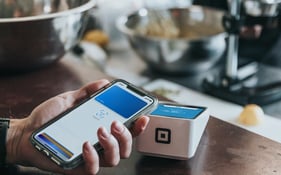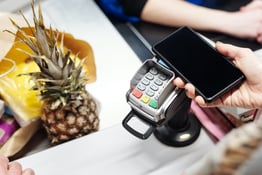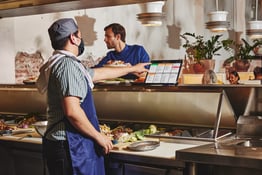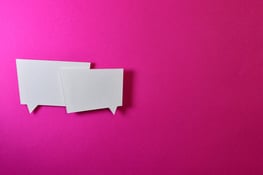As the pandemic grinds on, protecting the safety of diners and staff is now most operators' top priority. So managing social distancing, the amount of diners, and overall traffic flow in the restaurant is more crucial than ever—and unless you're one of those restaurants with an indecipherable but somehow infallible clipboard system, doing it digitally is the way to go.
If you've already integrated reservations and waitlisting into your restaurant's tech mix, in this article, we'll breakdown how you can optimize this software to operate more safely during the pandemic. And if you haven't got this tech in your stack yet, but are interested in adding it, check out Back of House's Solutions tab to compare reservation & waitlist software vendors and choose one that's right for you!
Staying Digitally "In Front Of" People
Since continuous, reliable foot traffic is so 2019, it’s key to keep your restaurant squarely in the only space your customers consistently spend time in—the digital one. Your restaurant needs a strong online presence, and it needs to be optimized for mobile, because people are browsing on their phones even more these days... especially when it comes to researching where to eat.
If you were into puns (which we very much are) you might say that strollers have transitioned to scrollers. But regardless of how you put it, the bottom line is that your restaurant will likely benefit from more being more searchable and discoverable to diners on their couches, and part of making it so is optimizing your presence on your chosen reservation platform.
>>>RELATED: Everything You Need to Know About Restaurant Reservation Management
Creating A Non-Physical Waitlist
Waiting for a table is a no-go for now at least, because designating areas for crowds to congretate is a social distancing disaster waiting to happen. But you don’t want to turn people away, either. Most full-service reservation software systems offer digital “on-waiting-lists" (aka OWLs) that allow guests to add themselves directly while staying remote. This also allows the restaurant to more effectively track restaurant traffic and manage capacity, which we'll get into more in a moment. You can also go a la carte with dedicated restaurant waitlist applications as well.
Managing Dining Room Capacity
Packed dining rooms aren’t coming back anytime soon—or at the very least, they shouldn't, because, y'know... *gestures vaguely and in all directions.* While specific capacity limits vary by state, and sometimes even by city, one thing is for certain: managing the capacity within restaurants will remain a constant.
This presents an ongoing challenge for restaurants, and puts an unmistakable strain on rightfully stressed-out staffs. Reservation software can't fix the underlying cause of that stress, but it can help with preempting large parties and controlling overall flow. But where they may help restaurant operators the most these days is with setting capacity limits. If you don’t want your indoor seating to exceed a certain amount of guests (in order to comply with a local mandate, or to keep your staff safe, or both) you can set a capacity limit on the software that will automatically cap it.
Track Time Spent In Dining Room
In Europe, it’s considered rude to bring the check to someone’s table before they ask. But here in 2020 America, turning tables has become a tricky balancing act. On one hand, you hate to subject your customers to anything resembling rushed service, because it might reflect poorly on the brand. On the other, you can only seat a fraction of your dining room, so your covers are way down. You don't have to be a math genius to see your best bet is to serve as many as possible, as fast as possible.
Your reservation system can help you do all that as safely as possible, by putting out an automatic prompt or push notification to diners upon booking that alerts them to the specific time policy in place (i.e. 60 minutes ax for parties of two, 90 minutes max for 3+, etc.)
Pro tip: while the software helps maintain clear messaging, keep in mind that enforcing these prompts ultimately falls upon your staff. Include them in the discussion about whether to implement these policies... and take seriously their concerns over handling unruly or noncompliant customers.
Manage Floor Plan Spacing
By now, we’ve all become very familiar with being six feet apart, but restaurants—even if no longer required—are still highly encouraged to maintain more distance between tables for both for indoor and outdoor dining. (Alaskan restaurants, for example, are mandated to keep their tables at least 10 feet apart.)
This calls for some reconfiguration of your current floorplan—something the top reservation systems can seamlessly integrate directly into your POS system. Enter your new table layout and any additional guidelines, and diners will be able to book tables based on that new seating chart. This helps your staff ensure flow etween the front and back of house and through the dining room itself.
>>>RELATED: Restaurant POS Systems: Things Every New Restaurateur Should Know
Calming Customer Concerns
Even with every policy in place, you're likely going to have nervous patrons with lots of questions. Reservation systems are a good forum for reassuring customers and privately answering their questions. For instance, most platforms have forms for filling out any specific food allergies; the same form functionality could be tweaked to allow customers to ask safety-related questions for a manager to answer. Since it’s been reported most people are hesitant about returning to restaurants even after things are “back to normal, this is a great opportunity for restaurants to prove they are taking every precaution and address any concerns related to face masks, distancing, and overall safety.
Reduce No-Shows
No-shows are never cool, but in the pandemic, they have a far larger impact on your restaurant's bottom line. Reservation and waitlist systems alike are a 1-2 punch for mitigating the frustration (emotional and financial!) of getting bailed on, allowing you to leverage technological features like calendar syncing, SMS notifications, credit card requiremets... and on and on. And of course, if your business has an OWL, you've got a better shot of filling that hole when a no-show inevitably occurs.
>>>RELATED: Reopening Your Restaurant During The Pandemic? These Technologies Can Help
Staying On Top of the Numbers
There’s no telling just how large an impact the pandemic will have on restaurants because it’s still going. What little industry data we have paints a bleak picture for the business as a whole. But when it comes to your business, reservation systems synced with your POS can make it easier to track sales data and analytics analytics to determine your current state of affairs and project future earnings. It's no panacea for the woes of the industry at large, but keeping your data dialed-in is a key piece of keeping your restaurant afloat—and fully optimizing your reservation system can certainly help.
[Photo: 1. Andrea Piacquadio via Pexels; 2. QuickOrder via Unsplash]





